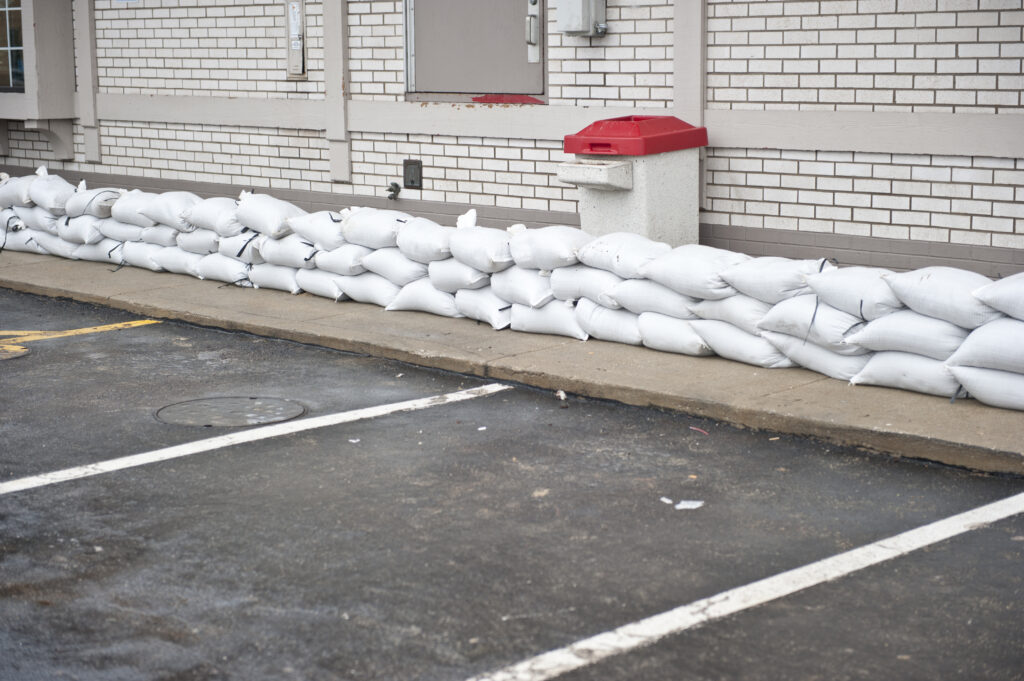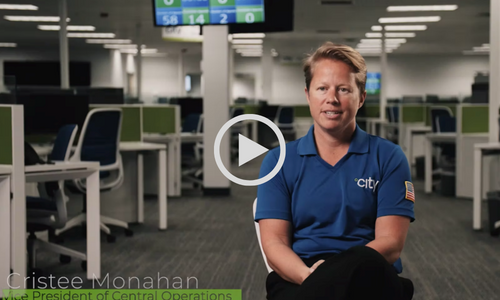
Massive power outages. Catastrophic flooding. Extreme heat and cold. U.S. homes and businesses suffered an estimated $169 billion in economic losses from both named and unnamed storms in 2021, according to the AON Weather, Climate and Catastrophe Report.
The most recent five years (2017–2021) averaged nearly 18 weather disaster events with losses exceeding $1 billion — compared to about 8 such events from 1980–2021, with losses CPI-adjusted. The first six months of 2022 has recorded nine such disaster events, and just this past September, Hurricane Ian caused historic levels of destruction across Florida and along the Georgia and Carolina coast.
While no one can control the weather, there are proven disaster planning and storm recovery steps business and facilities leaders can take to protect employees and assets, prevent and mitigate damage, and reduce losses from ruined goods and extended closures. Keep reading to learn more about these storm recovery best practices.
Storm recovery tip No. 1: Make business disaster planning an all-season activity
Storm recovery starts before the storm — and with the most effective business disaster planning, it starts well before the season even begins.
“We approach overall disaster planning year-round — before, during, and after season — and then drill down on each specific event with a plan, protect, and recover model,” said Cristee Monahan, Vice President of Central Operations of City FL.
The Insurance Institute for Business & Home Safety (IBHS) recommends facilities leaders make emergency and disaster planning a 12-month priority, with intensive focus during the weeks before a severe weather season begins. The organization provides free guides to help businesses develop detailed business disaster recovery plans geared for hurricanes, winter storms, thunderstorms, and wildfires at disastersafety.org.

Plan and Protect: Leading Up to the Storm
When severe weather warnings are issued, it’s time to kick preparations into high gear. Here are some critical steps to take before disaster strikes, which will help make storm recovery as efficient as possible.
- Alert recovery teams to be ready to deploy to damaged areas.
- Survey stores and bolster storm readiness by deploying sandbags, dams and water pumps, securing windows with storm shutters and plywood, stocking up supplies, and other steps to protect structures.
- Test generators and other emergency equipment, ensuring they’re fueled up, charged, and ready to go.
- Contact any external support vendors to confirm they’re ready to supply fuel and other materials, make repairs, and assist with reconstruction if needed.
- Notify employees of the potential for severe weather and instruct them to prepare for possible implementation of the emergency plan. Ensure all employees have the company’s emergency phone numbers and key contact information.
“As soon as a storm starts to threaten stores and business locations, that’s when the wheels really go into motion as we stage our disaster recovery team members, who we call our ‘storm troopers,’” said Monahan, explaining the team goes on high alert, ready to rapidly deploy to damaged locations. “During Hurricane Ida we were able to strategically deploy City’s storm troopers into the impact area as soon as it was safe. We also staged our fueling suppliers, generator support providers, and general contractors so they were ready to deploy.”
Storm recovery case study: How a leading grocery chain rapidly recovered after Hurricane Ida
When Hurricane Ida roared into Louisiana with winds reaching 149 miles per hour, the wind damage, widespread flooding, and power outages caused $75 billion in economic losses — making it the costliest weather event in 2021.
One grocery store chain suffered damage at nearly every one of its more than 70 stores in Louisiana, ranging from roofing and HVAC units blown off buildings to waterlogged flooring and total product loss. Despite the destruction, the company was able to get all but one of its stores back up and running within 48 hours with disaster recovery support from City, its integrated facilities management partner.
The grocery chain’s rapid recovery illustrates how effective planning and dedicated recovery teams can be a powerful combination in weathering the worst of storms.
We understand it’s imperative to our partners to stay open as long as they can, and to reopen as quickly as possible, so their communities can get the food and other supplies they need.Cristee Monahan
The takeaway? The experience shows how the plan, protect, and recover model works before, during, and after a natural disaster — and how important it is to secure a dedicated recovery partner.
Storm Recovery Steps
Without further ado, here are the steps retail stores can take to get back up and running after a storm:
- Use remote monitoring to track conditions during and immediately after a storm to determine which stores have issues to help guide recovery efforts.
- Assess the damage by deploying recovery teams to the impacted areas to survey conditions, take pictures, and ensure the location is safe and secure.
- Deploy resources to locations based on the damage assessment, including generator fuel and support, cleanup and repair crews, technicians, and other support.
- Maintain direct communication between store managers and recovery support teams on condition and recovery status, and keep employees updated.
- Complete emergency repairs and begin planning and deployment for longer term reconstruction projects.
3 important tips for a faster storm recovery
There are many factors that are important to help business owners recover more quickly after a natural disaster. Here are three tips that are disaster-tested to be especially effective for grocery, convenience, and other retailers:
1. Focus on generator and fuel support
Power outages can extend for days and even weeks, making generators essential. “We had 45 stores on generators up to a month in Louisiana after Ida, so we had a whole team working 24/7 just on power.”
2. Deploy remote monitoring
While remote equipment monitoring and video surveillance are useful tools at any time, they’re especially effective during any type of disaster. “Remote monitoring allows us to prioritize where to send technicians and helps a store get prepared to reopen. For example, managers know in advance whether they’ve had a refrigeration loss so they can get new product on the way,” said Monahan. “Managers will also get a better estimate on which stores can reopen and when, so they can notify employees.”
3. Ensure reliable disaster support
Unfortunately, when resources are scarce and in high demand, those relying on multiple vendors will be less likely to get timely support. Having either in-house resources or a facilities management partner that employs its own team of technicians will give retailers more control over getting the emergency support they need. Make sure your facilities management contract includes disaster preparation and recovery support. Ask for details about the team and its disaster recovery experience.
It’s human nature to focus more on the challenges of today than preparing for the future. Yet every time a disaster hits, we’re reminded of how important it is to be prepared.
Brick and mortar retail, grocery stores, and convenience stores face outsized risks from facilities damage and business losses as severe weather increases in frequency and severity. But with disciplined business disaster planning and reliable resource partners to provide preparation and storm recovery support, facilities leaders can position their stores to get back up and running fast.
At City, we’re dedicated to helping our partners increase efficiency and cut facilities costs, in addition to being prepared and ready to recover from any type of disaster. Watch the video below to learn more about City’s storm support:


 2016: City US is established in North America, in partnership with Southeastern Grocers (SEG), servicing over 750 supermarkets across 7 southern states.
2016: City US is established in North America, in partnership with Southeastern Grocers (SEG), servicing over 750 supermarkets across 7 southern states. 1985: Willie and Susan Haughey establish City Refrigeration Holdings (UK) Ltd in Glasgow, UK.
1985: Willie and Susan Haughey establish City Refrigeration Holdings (UK) Ltd in Glasgow, UK. 2009: City Australia launches in Melbourne, in partnership with Coles, servicing over 700 supermarkets across the country.
2009: City Australia launches in Melbourne, in partnership with Coles, servicing over 700 supermarkets across the country. 2015: City Asia launches in Kuala Lumpur, Malaysia, in partnership with Dairy Farm, servicing over 205 supermarkets across the region.
2015: City Asia launches in Kuala Lumpur, Malaysia, in partnership with Dairy Farm, servicing over 205 supermarkets across the region.